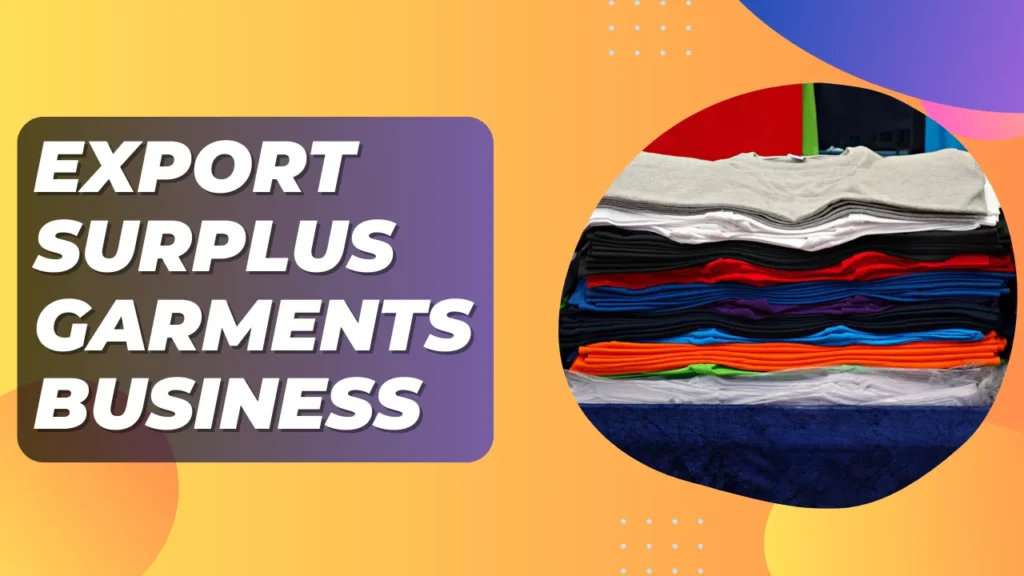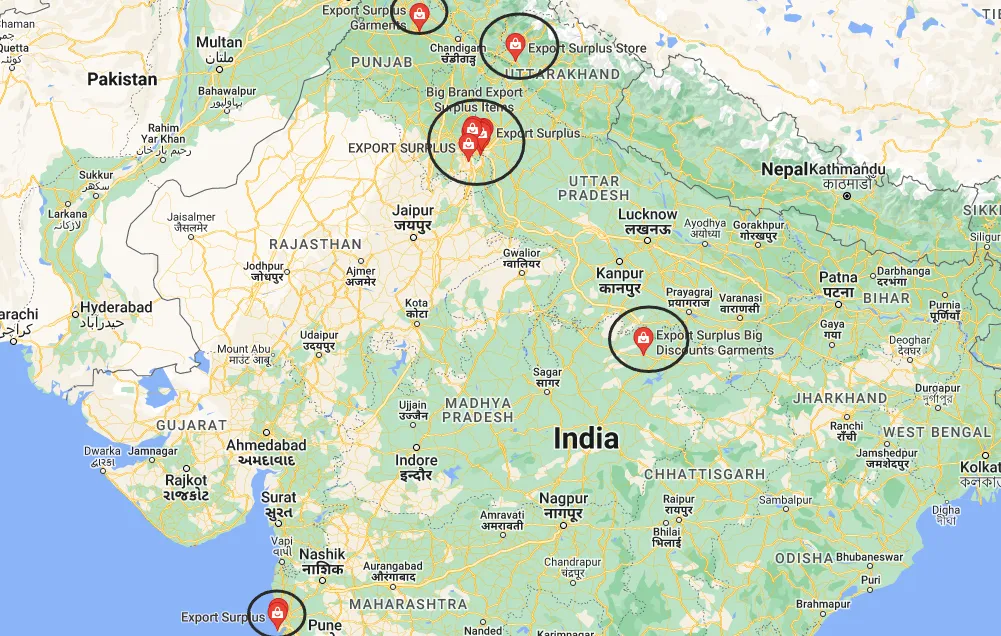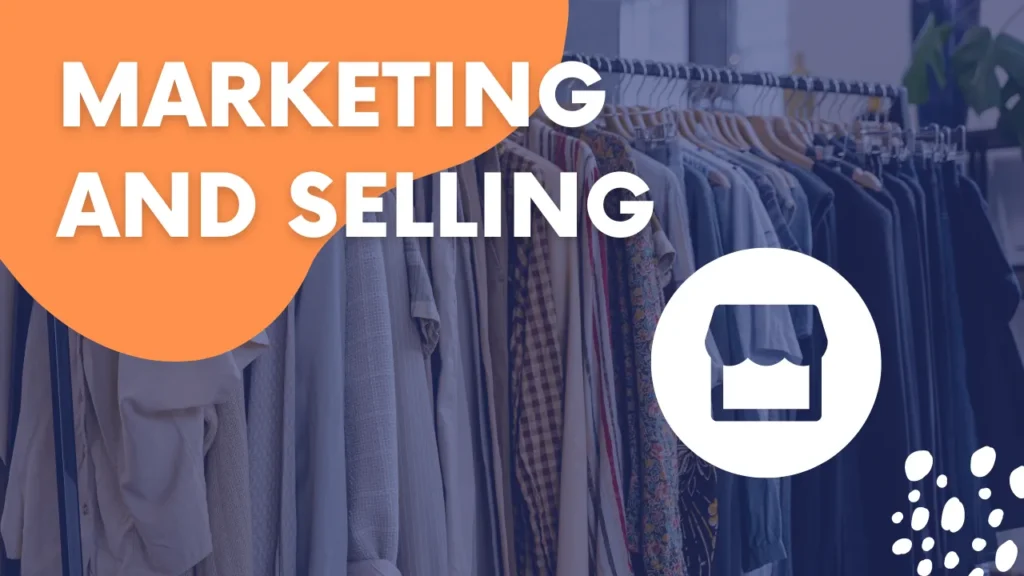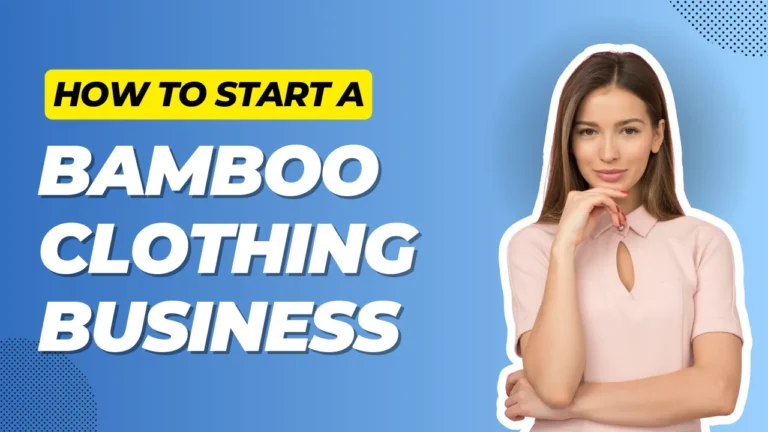Export surplus garments business in India:
Do you have a dream to start a business in the clothing industry and want to sell quality and branded products to customers? But if you don’t have much budget.
If you are looking for a low-budget clothing startup idea, then the export surplus garments business in India could be the perfect venture for you.
We’ll discuss everything from basic understanding to starting a business from scratch.
This business is beneficial for everyone: manufacturers, wholesalers, exporters, and customers.
Let’s know how it’s beneficial for everyone:
- Manufacturers: Sell excess inventory, generate extra income, and improve cash flow.
- Wholesalers: Buy high-quality garments cheaply, increase profits, and diversify offerings.
- Exporters: Start quickly with low investment, reduce risk, and diversify the customer base.
- Customers: Get stylish clothes at affordable prices and support local businesses.
Overall: Reduce waste, create jobs, boost the economy, and make fashion accessible.
Consumers benefit when they purchase high-quality apparel products at prices significantly lower than actual retail prices.
On the other hand, sellers/manufacturers can clear their excess inventory for new products, which helps them generate additional revenue.
Let’s discuss the steps to start the business.
How to Start an Export Surplus Garments Business?

1. Understand your export surplus garments business
The export surplus garments business is a simple concept, it is trading and selling excess clothing inventory at affordable prices because of their overproduction by the company.
In the clothing industry, it is not uncommon for retailers to end up with surplus garments due to many reasons, such as (overproduction, canceled orders, changes in consumer trends), etc.
Instead of letting these garments go to waste or storing them indefinitely, many companies capitalize on the export surplus market.
The export surplus garments business serves as a vital link between manufacturers and international markets.
Companies specializing in this niche purchase large quantities of surplus clothing from manufacturers at discounted prices.
They then export these garments to countries where demand exists or sell them through various distribution channels, including wholesalers, discount stores, online platforms, and independent retailers.
How do export surplus garments become available?
Here are some primary reasons why export surplus garments become available:
- Overproduction
- Seasonal changes
- Fashion Trends
- Order cancellations
- Production errors
- Quality Issues
- Economic recession
- Inventory management
- End-of-season sales
- Market saturation
- Changes in consumer demand
Types of export surplus Garments
- Overruns
- Excess inventory of clothing
- Out-of-season apparel
- Rejected garments
- Sample garments
- Overstocked or discontinued items
- Closeout or clearance apparel
Understand the pros and cons of starting an export surplus business:
Pros:
- Low investment
- High profit margins
- Quick turnaround time
- Wide variety of products
- Reduced risk
- Sustainable business model
Cons:
- Unreliable supply
- Quality issues
- Limited control over branding
- Competition
- Legal Requirements
- Logistics
2. Market research and preparation
When you are planning to start a surplus garment business, you need to research the market, such as market demand, competition, competitors, gaps in the market, etc.
It is not only a step of the business, but it is the most crucial part of setting up a business according to the market, which can help to get better results & sales.
During the research process, some important points you should consider, such as determining highly sold garments (children’s clothes, girls’ garments, dresses, leggings, etc.) and finding where there is more demand for the surplus market.
Next, the crucial is your selling process (online/offline), as well as making sure to research the current fashion trends, preferences, and styles before buying any surplus garments.
Consider the given points during research:
- Identify your target market.
- Analyze the competition
- Research the demand for surplus garments.
- Assess the supply chain.
- Determine your pricing strategy.
Popular Cities for Export Surplus Garments in India:
- North: Delhi, Mumbai, Ahmedabad, Jaipur
- South: Bangalore, Chennai, Surat
- East: Kolkata, Pune
- West: Hyderabad, Tirupur
These are only few exmaple, there are many cities and location in india where the surplus garments products are demanding, you can research more to find particular areas.

3. Choose a niche or product category.
Selecting the right niche and category for your export surplus garment business is crucial to meeting the market demand and competition and targeting specific customers.
You may target the athleisure clothing market, which combines comfort and versatility for both exercise and daily use.
Another alternative is to focus on streetwear, catering to the younger demographic’s desires with casual, urban-inspired attire.
Also, there are many other factors that you should consider when selecting a Niche or Category; here are some ideas given:
- Denim jeans
- T-shirts and tops
- Dresses
- Sportswear and activewear
- Outerwear (jackets, coats, sweaters)
- Children’s Clothing
- Accessories (scarves, hats, belts, bags)
4. Finding suppliers (manufacturer or wholesaler)
Once your research and planning are complete, find suppliers (manufacturers or wholesalers) for buying surplus garments at affordable prices. It depends on your networking, your research, and your experience in the clothing industry.
If you are a beginner and want to set up an expert surplus business, then start by connecting with a reliable wholesaler online.
Because, as a beginner, it is difficult to connect directly with the manufacturer to buy surplus garments at a reasonable, the best is to start from small.
Interact with manufacturers directly.
Establishing direct communication and content with manufacturers has several benefits.
If you can create a connection with a garments/clothing manufacturer, then that can help you to export surplus garments at better pricing.
Manufacturers often offer lower prices compared to wholesalers, as there are no intermediaries involved; as a result, you will get a higher profit margin.
Direct communication is always helpful for discussing your specific requirements, and in some cases, you can get products according to your needs.
Also, It helps to inquire about the manufacturing properties, quality control, and certifications.
Building strong supplier relationships
Establishing long-term relationships with reliable suppliers is most important for your business’s success.
Building your strong relationship with a reliable supplier will help you to get consistent product quality, timely deliveries, and better customer satisfaction, as well as valuable insights, market trends, and support.
Always build trust and open communication, which is key to establishing good supplier relationships.
Connect with trusted wholesalers.
If you don’t have more budget to buy a whole surplus of garments from a manufacturer, then you can start by buying a small stock from a reliable wholesaler, which requires (15-30 Thousand) to get started.
Wholesalers purchase goods in large quantities from manufacturers and sell them in smaller quantities to retailers & small clothing stores.
Wholesalers always offer convenience, variety, and mixed items, so it can be the best way when you are planning to start your business on a small scale.
- You can buy any quantity of products (depending on your budget)
- Unique and diverse inventory: They also offer a range of styles, sizes, and brands.
5. Where to buy export surplus garments
To buy export surplus garments for your business, you need to establish a relationship with a reliable wholesale supplier that specializes in export surplus clothing.
There are many options for buying surplus garments (connect directly with a manufacturer or buy from a wholesaler at a very discounted price).
- Garment manufacturers: Connect with them and buy surplus stocks
- From social media and online forums: Join online forums and Facebook groups and connect with the best supplier.
- You can find reliable Wholesale surplus suppliers on YouTube.
- Wholesale marketplaces: Alibaba, TradeIndia, and IndiaMART
Watch the YouTube tutorial to get the information on how to connect with supplier.
6. Setup your export surplus garments business
The next step is to set up your business. The process includes (selecting a suitable location, checking the product quality, setting up pricing, packaging, marketing, online or offline store setup, and selling products.
A suitable location is required for inventory, your business operations, packaging, and selling. When selecting your location, consider the accessibility, transportation, utility, and other facilities required for running an offline storefront.
- Proximity to manufacturing hubs or garment production centers
- Availability of spacious storage facilities
- Good infrastructure and logistics facilities
- Adequate security measures in the area
- Consideration of cost implications
7. Legal and regulatory considerations
Understanding the legal formalities is crucial for everyone to run a business legally.
Exporting garments often requires following specific regulations related to international trade and customs.
It depends on country-to-country and local regulations, and you should familiarize yourself with intellectual property rights and trademarks associated with your products.
It is not illegal to sell surplus export garments, but you cannot sell them with the brand name, logo, or tags.
The brand owner has the exclusive right to use their brand name, logo, and tags, and selling surplus garments with these markings could be considered trademark infringement.
When manufacturers sell surplus garments, they typically remove the tags, brand names, and logos to avoid any potential legal issues.
This is why you will often see surplus garments sold without any branding.
However, for running a business in India, one may need to follow some legal formalities such as:
- Business registration, IEC Code (Import Export Code)
- Tax registration: Register for Goods and Services Tax (GST).
- Comply with local regulations for selling clothing items.
For understanding the legalities, you can meet your local authoritis, or consult legal professionals.
8. Marketing and selling surplus garments

The process of marketing and selling surplus garments is not difficult in the digital marketing and social media age.
There are several marketing strategies that you can follow, such as (selling surplus garments by creating your website, selling on social media, promoting your products on YouTube, etc).
Make sure you can’t promote surplus garments using brand names and using their rights; be authentic and follow all legal requirements or regulations.
Here are some best ways to sell and promote export surplus garments:
- Set up a retail store for selling
- Build a website for listing your products.
- Sell through social media channels (Facebook, Instagram, YouTube)
- Sell in bulk (to retailers, fashion stores, or clothing stores)
- Promote your products through YouTube and social media
- Sell at local markets and events
Wrapping up
The export surplus garments business can be a profitable business model that offers benefits for both manufacturers and consumers worldwide and is also crucial for redistributing excess clothing inventory.
I hope this guide on “Starting a Surplus Garment Business” is helpful and informative.
By the end of this guide, my suggestion is that you need to research, plan your business properly, and work consistently with dedication or patience.
You may also like:
FAQs (Frequently Asked Questions)
What is surplus apparel?
Surplus refers to clothing that exceeds current demand or needs, resulting in excess quantities. This production may arise for reasons such as overproduction, certain styles or line closures, or the presence of excess stock that needs to be cleared.
How do you get surplus Items?
If you want to get surplus items at the best price, you need to contact the manufacturer directly; also, for starting a small-scale business, you can start by Buying surplus garments from a reliable wholesaler.
Is it legal to sell export surplus garments in India?
Export surplus garments with brand logos, tags, or company names are illegal to sell in India. This means that you can only sell export surplus garments if you remove the brand logos, tags, and company names. Otherwise, you could be sued by the brand for copyright infringement.
Are surplus clothes original?
Yes, surplus clothes/garments can be original. They are made for branded companies according to their orders. For reasons such as overproduction, canceled orders, and quality control issues, manufacturers may decide to sell export surplus garments.
What are the benefits of Export Surplus?
The benefits of export surplus include increased revenue, expanded market opportunities, reduced inventory costs, enhanced competitiveness, and improved trade balance.





